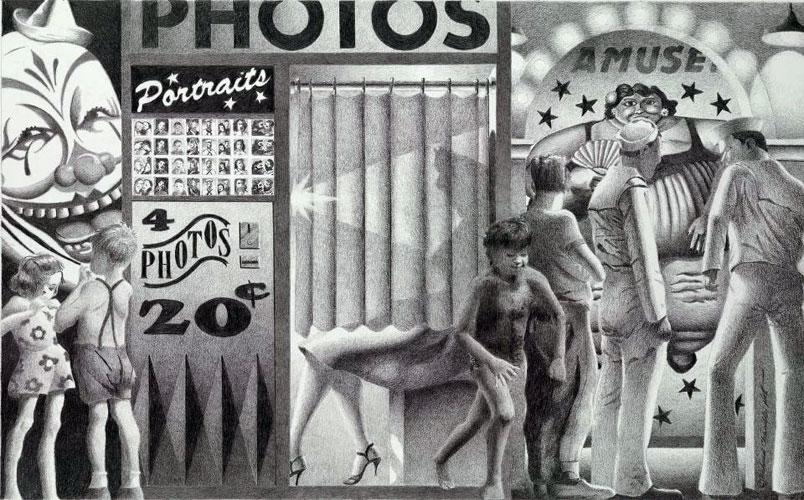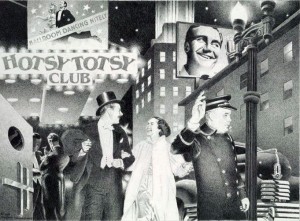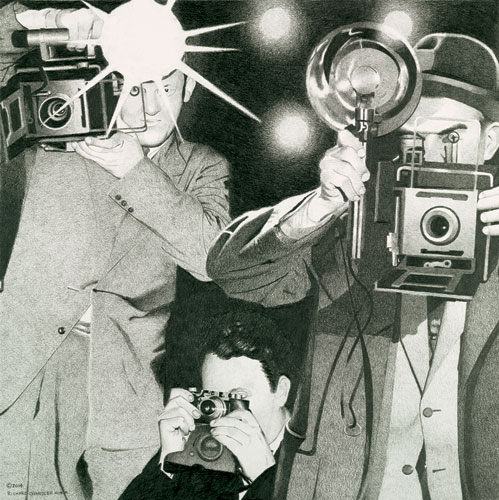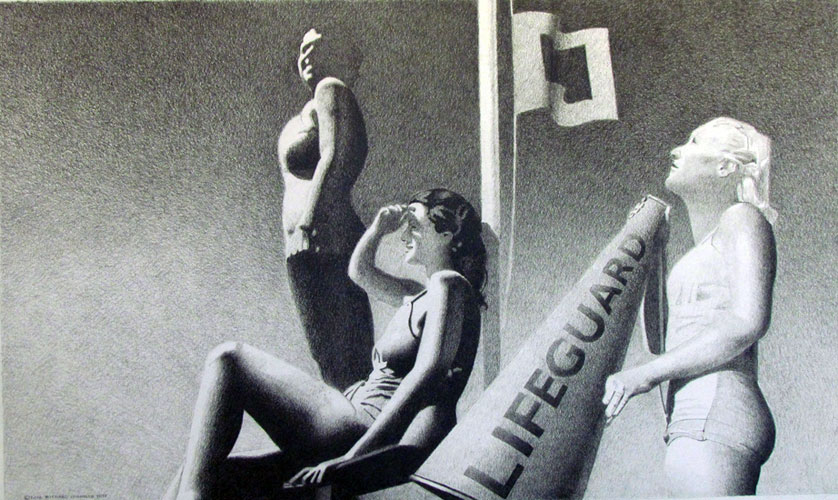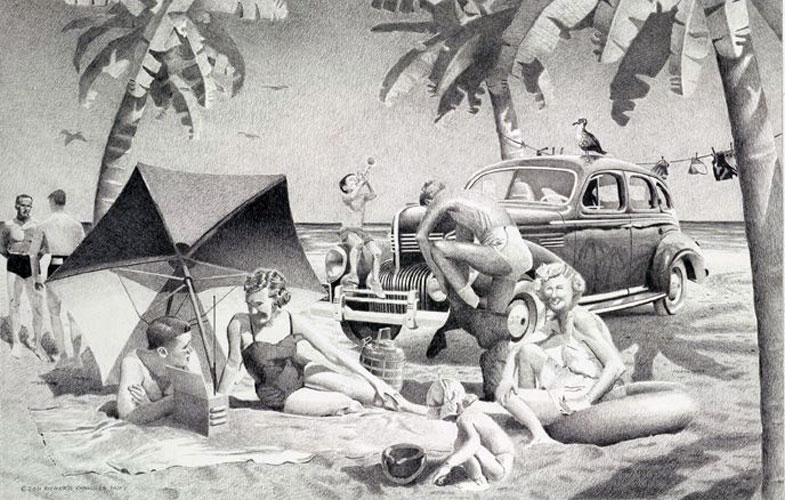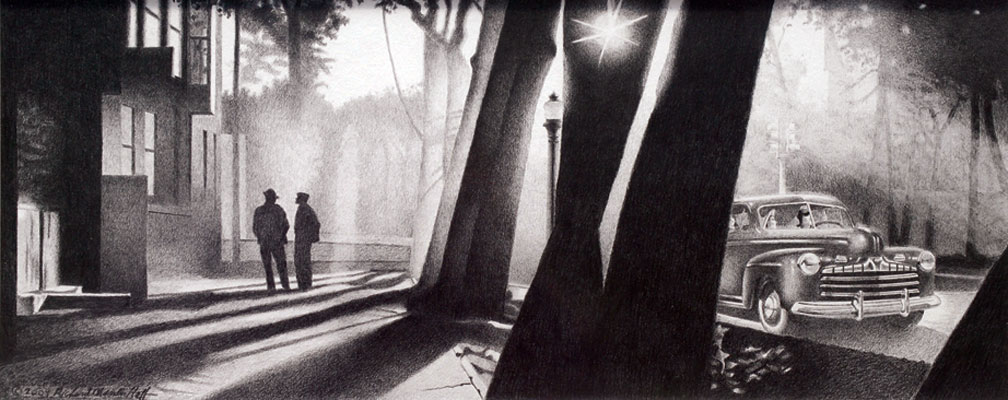Art, // May 22, 2016
Richard Chandler Hoff — ARTIST
Interview with artist Richard Chandler Hoff —
1. Who are you and what do you do?
My name is Richard Chandler Hoff. I am an visual artist.
2. Why art?
Ever since I was a young child I have been driven to express myself in a creative way. I first turned to music and played in various ensembles. Although I enjoyed playing, I realized that when an orchestra performs, it is a collaborative effort which makes the music. Then too, there is the structure of the music which except for jazz allows little room for personal interpretation. When I found visual art I fell in love. Making art became personal and not shared. I knew I wanted to make art my life and take sole responsibility for success or failure.
3. What is your earliest memory of wanting to be an artist?
My early years were dedicated to music. I began studying music at the age of seven. In Junior High School I was forced to attend an art class. At that time the teacher taught us the principles of perspective and it changed my life. Up until then my drawings looked amateurish and I was frustrated by my inability to realistically depict the world around me. After that experience I studied advanced perspective on my own and drawing at every opportunity. By the time I was to graduate from High School, I became convinced that the visual arts and not music was my true love. I have never regretted this choice.
4. What are your favorite subject(s) and media(s)?
My favorite subject is depicting life in America during the 1940s. I love the cars, movies and fashions from that decade. Obviously illustrating an era of almost fifty years ago is a challenge. I work exclusively in graphite pencil on paper. I feel my black and white drawings are highly appropriate to portraying an era mostly photographed in black and white.
5. How do you work and approach your subject?
Each drawing begins with a concept. A “what if?” moment. The concept must then be supported by photographic research. I rely on extensive photo files and my library to bring concept to reality. When my research is complete, I make preliminary sketches from the selected photos. It is at this point a character’s facial expressions, hair styles and clothing are altered to support my concept. Every element, large and small, fuses together with light and shadow in a seamless composition to convince the viewer he is a witness to an actual moment in time.
6. What are your favorite art work(s), artist(s)?
Edward Hopper, Maxfield Parrish and Peter Milton are my favorite artists. Hopper because of the strong architectural elements and evocative lighting in his work and because he showed me the legitimacy of depicting the urban landscape. Parrish because of the beautiful skies and dramatic use of light and shadow in his compositions. Peter Milton, a lesser known artist who I became aware of at art school. He was in graduate school when diagnosed with color blindness. He has spent the remainder of his career creating drawings and prints in black and white. His work is beautiful and compelling.
7. What are the best responses you have had to your work?
There are basically two responses to my work that I particularly cherish. The first is from older people who actually lived through the 1940s. Their response is often that I captured the essence of that time. The second is when I depict a hot, sunny day or a cold crisp one in winter. Viewers often say, “ I remember a day just like that when I was a kid. We’d . . .”. I count my art a success when I can connect with a viewer on a purely visceral level.
8. What do you like about your work?
I like all the phases of creation. Sometimes I awake in the middle of the night with a hot concept for a drawing. I can hardly wait until the next day to begin the research. The research itself is fun. I have become very knowledgeable about the 1940s because I often read the captions of the photos I am using. I learn something new all the time. I especially love when it is time to actually begin shading the drawing. The wonderful direct and tactile relationship between pencil and paper enables me to intimately connect with the creative process.
9. What advice would you give to other artists?
First of all, think of art school as just the beginning, an opportunity to learn the fundamentals of a variety of mediums. Use every opportunity to view the work of others and learn how to see as an artist. Use your time after school to perfect your craft. Find a way to combine what you love with your art. For example, if you love horses and enjoy painting them, then become the best horse painter you can be.
10. Where do you see yourself in 5-10 years?
Well as a person who is about to turn 71 years old, in one word, ALIVE! My art is what keeps me young and my mind agile. The opportunities are not drying up. Every year seems to bring a new adventure. I’m having a ball and am too busy to retire.
LINKS —
Facebook: https://www.facebook.com/Richard-Chandler-Hoff-Graphite-Pencil-Drawings-228289917252938/timeline





